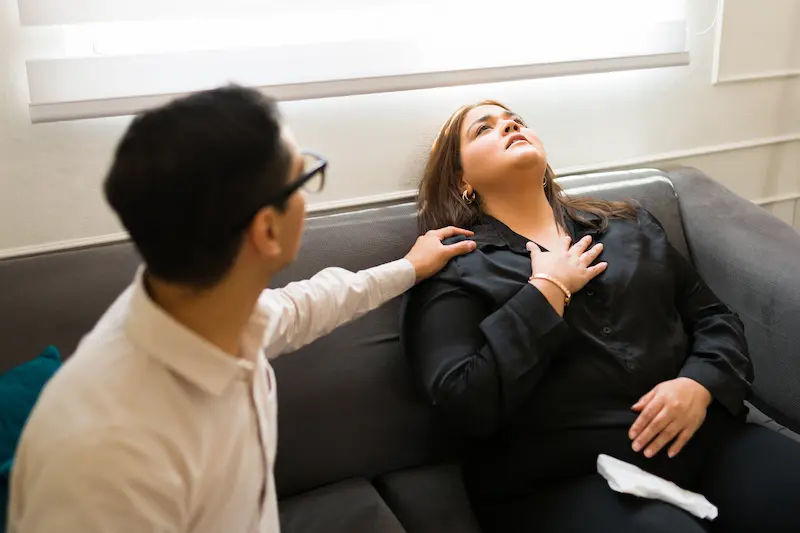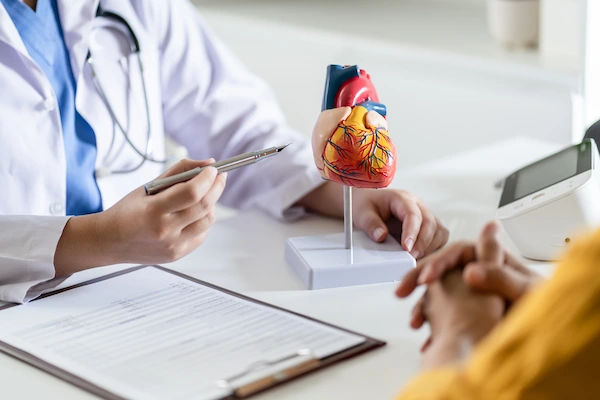Guide to Black Eye First Aid Kit Home Care What To Expect
Learn essential first aid and home care tips for black eyes to reduce swelling, prevent complications, and promote faster healing.


Introduction
A black eye, with its dramatic shades of purple, blue, and green, can look more serious than it often is. While it’s typically the result of a common bump or fall, knowing the right black eye first aid steps is crucial for reducing pain and speeding up healing. Proper initial care can make a significant difference in how quickly the swelling and discolouration subside. This guide will walk you through everything you need to know, from the immediate aid you should apply to the signs that indicate a need for professional medical attention. Whether you're caring for a child who took a tumble or dealing with a minor sports injury yourself, we’ll cover the essential home care practices and set realistic expectations for the recovery process. Let’s dive into how you can effectively manage a black eye and get back to looking and feeling your best.
What is a Black Eye, Really?
A black eye, medically known as a periorbital haematoma, is essentially a bruise around the eye. It occurs when blood and other fluids collect in the space around the eye, leading to the characteristic swelling and discolouration.
The Science Behind the Bruising
The skin around our eyes is relatively thin and delicate, with a rich supply of blood vessels. When this area suffers an impact, these small blood vessels (capillaries) can break and leak blood into the surrounding tissue. Because the skin is loose, the blood pools easily, creating the swollen, dark mark we recognise as a black eye. The discolouration changes over time as the body breaks down and reabsorbs the blood, which is why you’ll see it shift from dark purple to blue, green, and finally yellow.
Common Causes of a Black Eye
The most obvious cause is direct trauma to the eye or nose. This can happen from:
- Sports injuries (e.g., a basketball or tennis ball to the face)
- Accidental bumps into a door or cabinet
- Falls
- Fights
- Post-surgical swelling, particularly after procedures like rhinoplasty or facial surgery.
Consult an Ophthalmologist for the best advice
Your Step-by-Step Black Eye First Aid Kit (The First 24-48 Hours)
Acting quickly and correctly in the first two days is the most critical part of black eye first aid. The goal is to minimise swelling and inflammation.
Step 1: Immediate Ice Application
Apply a cold compress to the affected area as soon as possible. The cold causes blood vessels to constrict, reducing blood flow and limiting the size of the bruise and swelling. Duration: Apply the ice pack for 10-20 minutes at a time. Frequency: Repeat this process several times throughout the first day.
How to Make an Effective Ice Pack
Never apply ice directly to the skin. Instead, use a flexible cold pack or create your own by wrapping a bag of frozen peas or ice cubes in a thin cloth or towel. A bag of peas is ideal because it conforms to the shape of the face.
Step 2: Gentle Compression and Elevation
While applying ice, you can use gentle pressure to help reduce swelling. Be very careful not to press directly on the
eyeball. Additionally, try to keep your head elevated, even when sleeping. Use an extra pillow at night. This helps drain fluid away from the injured area, further reducing puffiness.
Step 3: Pain Management
If you’re experiencing pain, over-the-counter pain relievers like acetaminophen (Tylenol) can be helpful. Avoid ibuprofen or aspirin in the first 24 hours if possible, as they can thin the blood and potentially increase bleeding, making the bruise worse.
What to Absolutely Avoid: Common Black Eye Myths
There’s a lot of misinformation out there. Steer clear of these common mistakes:
- Raw Meat: The old trope of putting a raw steak on a black eye is ineffective and unhygienic, posing a risk of bacterial infection.
- Poking or Rubbing: This can aggravate the injury and increase swelling.
- Wearing Contact Lenses: If you experience any eye pain or vision changes, avoid contacts until you’ve been evaluated.
The Healing Timeline: What to Expect Day by Day
Understanding the black eye healing stages can reassure you that the process is normal.
Days 1-2: Swelling and Discolouration Peak
Swelling is usually at its worst during the first 24-48 hours. The bruise will appear dark red or purple.
Days 3-5: The Colour Shift Begins
As your body starts to break down the pooled blood, the bruise will change colour, often becoming bluish or even blackish. The swelling will begin to go down.
Days 6-10: Gradual Fading
The bruise will typically turn a greenish or yellowish colour as it continues to heal. Most of the swelling should be gone by this point. For most people, a black eye is significantly better or completely healed within two weeks.
When to Worry: Signs You Need a Doctor
Most black eyes are minor and heal on their own. However, they can sometimes be a sign of a more serious injury. It's crucial to know when to worry about a black eye.
Red Flag Symptoms for a More Serious Injury
Seek immediate medical attention if you experience any of the following:
- Vision Changes: Blurred, double, or loss of vision.
- Severe Pain: Pain that doesn't subside with over-the-counter medication.
- Inability to Move the Eye: Difficulty looking in different directions.
- Blood in the Eye: Any blood visible on the coloured part (iris) or the white part (sclera) of the eye.
- Signs of a Head Injury: Nausea, vomiting, dizziness, or loss of consciousness at the time of injury.
- A Deep Cut or Laceration: That may require stitches.
- Deformity of the Eye Socket or Cheekbone: Which could indicate a fracture.
If you experience any of these symptoms, it's essential to consult a doctor.
Advanced Home Care: Speeding Up Recovery After 48 Hours
After the initial swelling has peaked, you can switch tactics to promote healing.
The Switch to Warm Compresses
After 48 hours, gently applying a warm (not hot) compress can help increase blood flow to the area. This helps the body clear away the debris from the bruise more quickly, speeding up the fading process. Use a warm, damp washcloth for 10-minute intervals.
Nutrition for Healing: Foods That Help
Eating a diet rich in vitamins and minerals can support your body’s natural healing processes. Focus on foods high in:
- Vitamin C: Found in citrus fruits, bell peppers, and broccoli, it’s essential for collagen production and tissue repair.
- Vitamin K: Found in leafy greens like spinach and kale, it plays a key role in blood clotting.
- Zinc: Found in nuts, seeds, and whole grains, it supports immune function and wound healing.
Conclusion
A black eye, while often looking alarming, is usually a minor injury that responds well to prompt and proper home care. By following the simple black eye first aid steps of icing, compressing, and elevating, you can effectively manage the initial swelling and discomfort. Remember that the changing colours are a normal part of the healing process as your body works to clear the bruise. The most important takeaway is to be vigilant. Knowing the signs that indicate a more serious underlying injury empowers you to seek timely medical help. By combining attentive aid with a little patience, you can navigate the recovery of a black eye smoothly and safely. If you have any doubts during your recovery, never hesitate to seek professional medical advice.
Consult an Ophthalmologist for the best advice
Consult an Ophthalmologist for the best advice

Dr Rajesh Rastogi
Ophthalmologist
33 Years • MBBS, MS Ophthalmology
New Delhi
Rotary Diabetic Centre, New Delhi
Dr. Padmini S
Ophthalmologist
4 Years • MBBS,MS
Bengaluru
Apollo Medical Center, Marathahalli, Bengaluru
Dr. V.chittibabu
Ophthalmologist
30 Years • MBBS, MS
Vellore
Krupa Eye Clinic, Vellore

Dr L R Seth
Ophthalmologist
36 Years • MBBS, MS, DOMS
Delhi
Apollo Hospitals Indraprastha, Delhi
Dr. Akashdipta Saha
Ophthalmologist
4 Years • MBBS, MD(Ophthalmology), Fellowship in Retina & Vitreous
Delhi
AIIMS, Delhi
Consult an Ophthalmologist for the best advice

Dr Rajesh Rastogi
Ophthalmologist
33 Years • MBBS, MS Ophthalmology
New Delhi
Rotary Diabetic Centre, New Delhi
Dr. Padmini S
Ophthalmologist
4 Years • MBBS,MS
Bengaluru
Apollo Medical Center, Marathahalli, Bengaluru
Dr. V.chittibabu
Ophthalmologist
30 Years • MBBS, MS
Vellore
Krupa Eye Clinic, Vellore

Dr L R Seth
Ophthalmologist
36 Years • MBBS, MS, DOMS
Delhi
Apollo Hospitals Indraprastha, Delhi
Dr. Akashdipta Saha
Ophthalmologist
4 Years • MBBS, MD(Ophthalmology), Fellowship in Retina & Vitreous
Delhi
AIIMS, Delhi
More articles from General Medical Consultation
Frequently Asked Questions
1. How long does a black eye typically last?
Most black eyes heal completely within 1 to 2 weeks. The noticeable swelling usually subsides after a few days, but the bruising may take longer to fade through its various colour stages.
2. Can I use makeup to cover a black eye?
It's best to avoid applying makeup directly to a fresh black eye, as it can irritate the sensitive skin and potentially cause an infection. Wait until the swelling has gone down and the skin is no longer tender.
3. When should I switch from ice to a warm compress?
Make the switch after the first 48 hours. Ice is for reducing initial swelling, while warmth helps disperse the pooled blood later in the healing process.
4. What does it mean if there is blood in the white of my eye?
This is called a subconjunctival hemorrhage. It can look scary, but it's often harmless and will resolve on its own, similar to a bruise. However, if it occurs after significant trauma, it's best to get it checked by a doctor to rule out other injuries.
5. Are some people more prone to black eyes?
Yes, individuals who take blood-thinning medication or have certain bleeding disorders may bruise more easily and severely.




